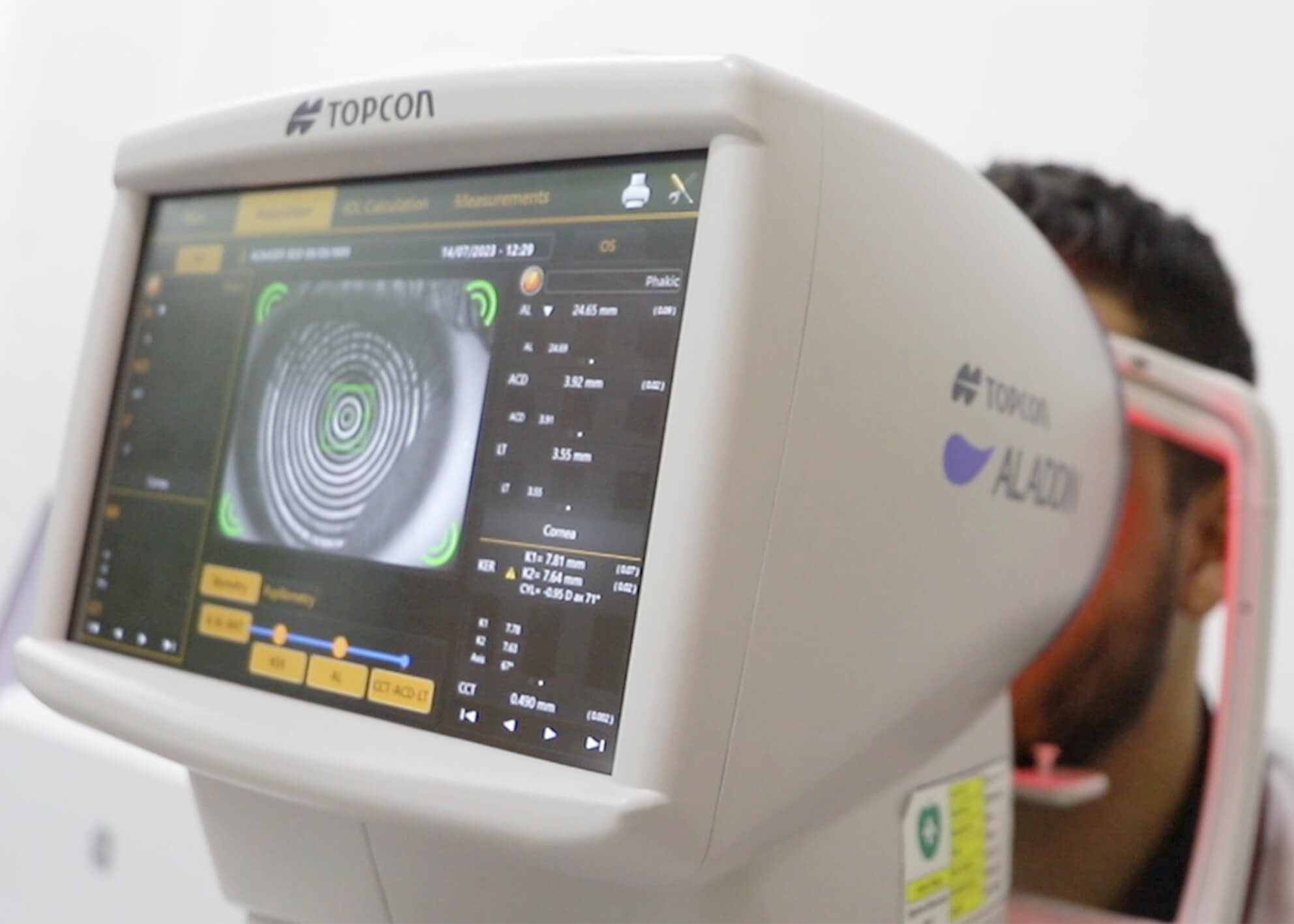Corneal Transplantation (Corneal Transplant) at Eye Clinic DRHC Dubai
What is a Corneal Transplantation?
Corneal transplantation, also known as corneal grafting or keratoplasty, is a surgical procedure where a damaged or diseased cornea is replaced with a healthy donor cornea. The cornea is the clear, dome-shaped surface of the eye that helps focus light, enabling clear vision. When the cornea becomes clouded or scarred, vision can be significantly impaired. Corneal transplantation restores vision by replacing the affected cornea with healthy tissue.
Indications for Corneal Transplantation
Corneal transplantation is indicated for various conditions that cause significant visual impairment or pain. Some of the common indications include:
- Keratoconus: A progressive eye disorder where the cornea thins and bulges into a cone shape, leading to distorted vision.
- Corneal Scarring: Resulting from infections, injuries, or previous surgeries that have left the cornea opaque or scarred.
- Fuchs' Endothelial Dystrophy: A genetic condition that affects the innermost layer of the cornea, causing swelling and vision loss.
- Corneal Infections: Severe infections, such as bacterial, viral, or fungal keratitis, that have led to permanent corneal damage.
- Bullous Keratopathy: A condition where the cornea swells and forms painful blisters, often due to endothelial cell failure.
- Corneal Ulcers: Non-healing ulcers that have caused significant corneal damage.
- Hereditary Corneal Disorders: Conditions that lead to progressive deterioration of the cornea.
Treatment of Corneal Transplantation
At DRHC Dubai, we offer various types of corneal transplantation procedures, tailored to the specific needs of each patient:
Penetrating keratoplasty is a full-thickness corneal transplant where the entire damaged cornea is removed and replaced with a healthy donor cornea. This procedure is typically performed when the corneal damage extends through all layers of the cornea.
Descemet's Stripping Endothelial Keratoplasty (DSEK)
DSEK is a partial-thickness corneal transplant that replaces only the damaged endothelial layer (the innermost layer) of the cornea. This procedure is less invasive than penetrating keratoplasty and is often used for conditions like Fuchs' endothelial dystrophy.
Descemet's Membrane Endothelial Keratoplasty (DMEK)
DMEK is a more advanced and precise version of DSEK, involving the transplantation of only the Descemet’s membrane and endothelium. This procedure offers faster recovery and better visual outcomes due to its minimally invasive nature.
Deep Anterior Lamellar Keratoplasty (DALK)
DALK is a partial-thickness transplant that replaces the front layers of the cornea while preserving the healthy endothelial layer. This procedure is suitable for conditions that affect the outer and middle layers of the cornea, such as keratoconus.

The Corneal Transportation Procedures
The corneal transplantation procedure involves several steps:
Pre-Operative Evaluation
- Comprehensive Eye Exam: A thorough examination of the eye to assess the extent of corneal damage and determine the most appropriate type of transplant.
- Medical History: Review of the patient’s medical history and any underlying conditions that may affect the surgery or recovery.
- Donor Cornea Selection: Matching the donor cornea to the patient to ensure compatibility and reduce the risk of rejection.
Surgical Procedure
- Anesthesia: Local or general anesthesia is administered to ensure the patient’s comfort during the procedure.
- Removal of Damage Cornea: The surgeon carefully removes the damaged portion of the cornea.
- Placement of Donor Cornea: The healthy donor cornea is precisely positioned and sutured into place.
- Closure: The surgical site is closed, and a protective shield is placed over the eye to aid in healing.
Post-Operative Care
- Medications: Prescribed eye drops to prevent infection, reduce inflammation, and promote healing.
- Follow-Up Visits: Regular check-ups to monitor healing and ensure the graft is integrating well.
- Activity Restriction: Temporary restrictions on activities to avoid strain or injury to the eye.
- Monitoring for Rejection: Signs of graft rejection, such as redness, pain, or vision changes, require immediate medical attention.
Risks and Complications
As with any surgical procedure, corneal transplantation carries some risks and potential complications, including:
- Graft Rejection: The body’s immune response against the donor cornea, which can occur months or even years after surgery.
- Infection: Post-operative infection that can affect the healing process.
- Glaucoma: Increased intraocular pressure that may require treatment.
- Astigmatism: Irregular curvature of the cornea that can affect vision.
- Recurrence of Original Condition: In some cases, the original condition that necessitated the transplant may recur.
Why Choose DRHC Dubai?
At DRHC Dubai, we are dedicated to providing exceptional eye care with a focus on advanced surgical techniques and patient comfort. Our experienced ophthalmologists and state-of-the-art facilities ensure the highest standard of care for corneal transplantation. We prioritize personalized treatment plans tailored to each patient’s unique needs, ensuring optimal outcomes and enhanced quality of life.
.png?width=281&height=59&name=bookanappointment%20(1).png)
At Dr. Rami Hamed Center, our Ophthalmology department is dedicated to safeguarding your vision health through expert eye care Professionals, Renowned as one of the best eye care clinics in Dubai our Ophthalmology Specialists provide services for Cataract and Retina treatment with Laser and Refractive surgeries.



.webp)

.png?width=281&height=59&name=bookanappointment%20(1).png)






